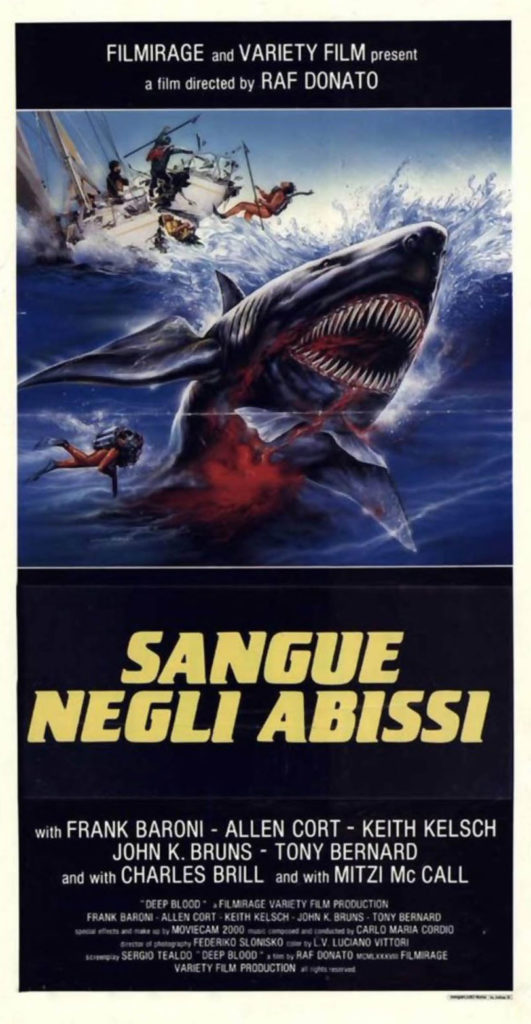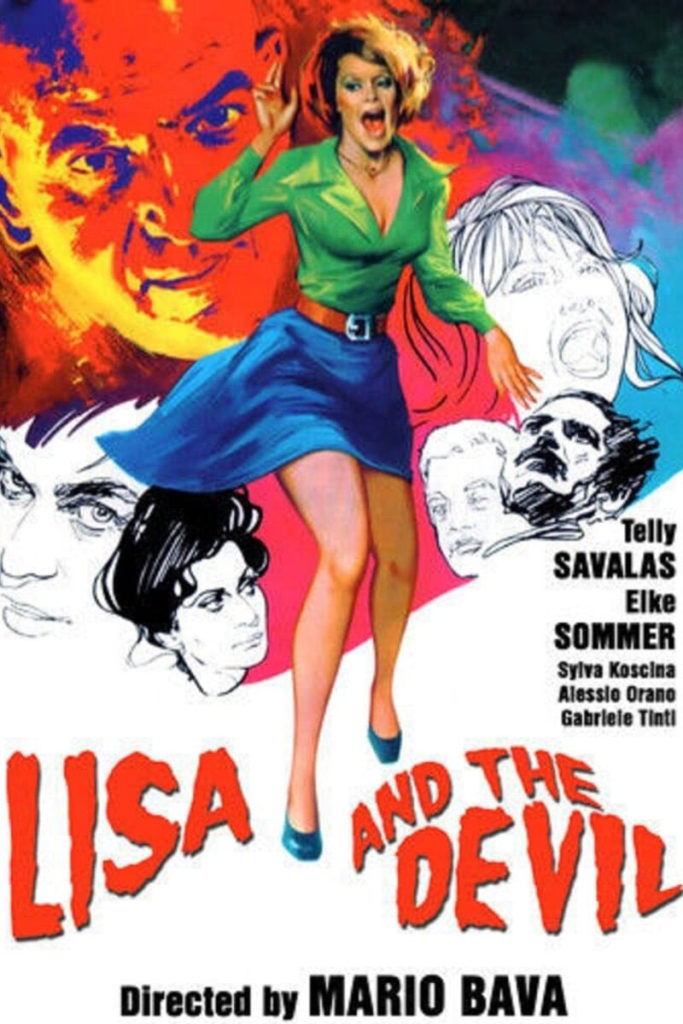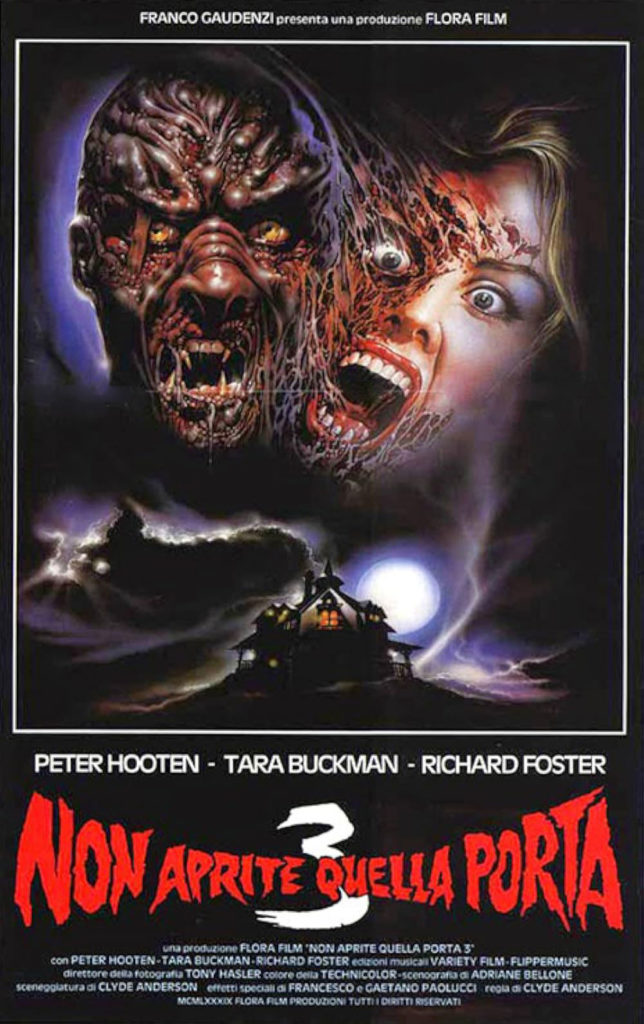 According to the internet, so it must be true, Raffaele Donato, whose work in film had been very limited, decided one day that he would like to direct a movie. As it happened, Joe D’Amato was looking for someone to helm a cheap sharksploitation flick, the only requirement being fluency in English. Donato leapt at the chance, but after filming a single scene, decided life in the director’s chair was not for him. No worries, as the prolific D’Amato was ready to step in and finish beating this dog of a movie to within an inch of its life.
According to the internet, so it must be true, Raffaele Donato, whose work in film had been very limited, decided one day that he would like to direct a movie. As it happened, Joe D’Amato was looking for someone to helm a cheap sharksploitation flick, the only requirement being fluency in English. Donato leapt at the chance, but after filming a single scene, decided life in the director’s chair was not for him. No worries, as the prolific D’Amato was ready to step in and finish beating this dog of a movie to within an inch of its life.
The result was Deep Blood (Italian: Blood in the abyss), a Jaws ripoff whose greatest danger to characters was stock footage.
From a screenplay by George Nelson Ott (possibly an alias for D’Amato, as this is his only credit on IMDb), Deep Blood tells the tale of an oceanside community terrorized by a killer great white shark.
The first we see of the shark is rank, amateurish, manipulative filmmaking. A mother, her son, and their tiny dog visit the beach for a dip in the ocean. We know one of these three is going to get eaten. Which is it to be? The shot switches to and fro. It’s not frantic, but it’s meant to keep the audience guessing. Will this movie kill a child? A mother? It surely won’t kill the dog, as, in the hierarchy of film murder, dogs elicit the most groans. It kills the mom, and the plot, what there is of it, is off and running.
Four local, college-aged youths with uninteresting backstories are reuniting in town for vacation, and the shark attack has upended things. When one of them, John (John K. Brune), is eaten in a cloud of blood and no gore, Miki (Frank Baroni), leads the effort to exact revenge on the creature. A whole bunch of character drama is placed in his way. The sheriff (could be Tony Bernard, could be Tom Bernard, could be Tody Bernard — the credits are unclear) doesn’t believe him. The responsible adults in town join in the sheriff’s skepticism. Yet, Miki perseveres against authority and town bullies alike to get us to denouement. Continue reading “Deep Blood, aka Sangue negli abissi”

 According to the internet, so it must be true, Raffaele Donato, whose work in film had been very limited, decided one day that he would like to direct a movie. As it happened, Joe D’Amato was looking for someone to helm a cheap sharksploitation flick, the only requirement being fluency in English. Donato leapt at the chance, but after filming a single scene, decided life in the director’s chair was not for him. No worries, as the prolific D’Amato was ready to step in and finish beating this dog of a movie to within an inch of its life.
According to the internet, so it must be true, Raffaele Donato, whose work in film had been very limited, decided one day that he would like to direct a movie. As it happened, Joe D’Amato was looking for someone to helm a cheap sharksploitation flick, the only requirement being fluency in English. Donato leapt at the chance, but after filming a single scene, decided life in the director’s chair was not for him. No worries, as the prolific D’Amato was ready to step in and finish beating this dog of a movie to within an inch of its life. Lisa and the Devil, the 1973 film from Italian auteur Mario Bava, has become one of his more renowned films in the last couple of decades. I first saw it around twenty years ago with a roommate who was watching it for her film class at NYU. Upon release, though, it was a butchered product, with a framing story shot and added after Bava delivered his cut. Of this film, which had been released under the title of La Casa dell’esorcismo (House of Exorcism), Bava said, “La casa dell’esorcismo is not my film, even though it bears my signature. It is the same situation, too long to explain, of a cuckolded father who finds himself with a child that is not his own, and with his name, and cannot do anything about it.”
Lisa and the Devil, the 1973 film from Italian auteur Mario Bava, has become one of his more renowned films in the last couple of decades. I first saw it around twenty years ago with a roommate who was watching it for her film class at NYU. Upon release, though, it was a butchered product, with a framing story shot and added after Bava delivered his cut. Of this film, which had been released under the title of La Casa dell’esorcismo (House of Exorcism), Bava said, “La casa dell’esorcismo is not my film, even though it bears my signature. It is the same situation, too long to explain, of a cuckolded father who finds himself with a child that is not his own, and with his name, and cannot do anything about it.” Sometimes, one can tell the objective quality of an Italian horror flick by looking at its title upon release in the old country. Night Killer, from 1990, is a case in point. It was released in Italy with the title Non aprite quella porta 3, which translates as Do Not Open That Door 3, implying that this is the third in a series. The first film to use Do Not Open That Door in Italian theaters was The Texas Chain Saw Massacre. Night Killer is not related to Tobe Hooper’s classic in any way, but producer Franco Gaudenzi hitched his wagon to Hooper’s regardless. If there is one thing I’ve learned from watching all these Italian horror flicks for the Horrorshow, it’s that trademark law must be different in Rome.
Sometimes, one can tell the objective quality of an Italian horror flick by looking at its title upon release in the old country. Night Killer, from 1990, is a case in point. It was released in Italy with the title Non aprite quella porta 3, which translates as Do Not Open That Door 3, implying that this is the third in a series. The first film to use Do Not Open That Door in Italian theaters was The Texas Chain Saw Massacre. Night Killer is not related to Tobe Hooper’s classic in any way, but producer Franco Gaudenzi hitched his wagon to Hooper’s regardless. If there is one thing I’ve learned from watching all these Italian horror flicks for the Horrorshow, it’s that trademark law must be different in Rome.